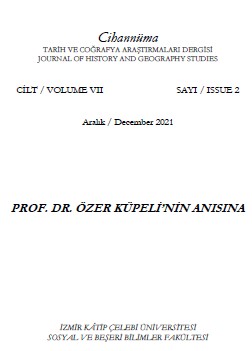DOĞU AKDENİZ’DE SALGIN HASTALIKLARLA MÜCADELE: KLAZOMEN (URLA) TAHAFFUZHANESİ
STRUGGLE AGAINST EPIDEMICS IN THE EASTERN MEDITERRANEAN: KLAZOMENAI (URLA) QUARANTINE
Author(s): Ufuk AdakSubject(s): Regional Geography, Local History / Microhistory, Health and medicine and law, 19th Century, The Ottoman Empire
Published by: İzmir Kâtip Çelebi Üniversitesi, Sosyal ve Beşeri Bilimler Fakültesi
Keywords: Urla (Klazomenai); Quarantine; Infectious Diseases; Izmir; Public Health;
Summary/Abstract: Izmir, the major port city of the East Mediterranean, was one of the key trade hubs of the Ottoman Empire in the 19th century. The increasing human mobility particularly with the usage of steamboats and trains led Izmir to have a very strategic position in the Mediterranean quarantine network. This article examines the role of Klazomen (Urla) Quarantine that played to prevent infectious diseases such as cholera and plague from the perspectives of international quarantine applications and public health. The Klazomen Quarantine became the main center of sterilization and health in the Eastern Mediterranean particularly during the epidemics and Hajj when human mobility was intense. The new sanitary technologies such as sterilization machines were used for the first time in the Quarantine after Kavak Quarantine in Istanbul. Bacteriology, hygiene, and public health were the common agenda of 19th century states. The Ottoman government issued a series of regulations to prevent the spread of contagious diseases particularly in Istanbul and attempted to protect public health with the help of quarantines. However, the sanitary precautions taken by the Empire and the demands of subjects did not coincide with each other in some cases.
Journal: Cihannüma: Tarih ve Coğrafya Araştırmaları Dergisi
- Issue Year: VII/2021
- Issue No: 2
- Page Range: 131-156
- Page Count: 26
- Language: Turkish

